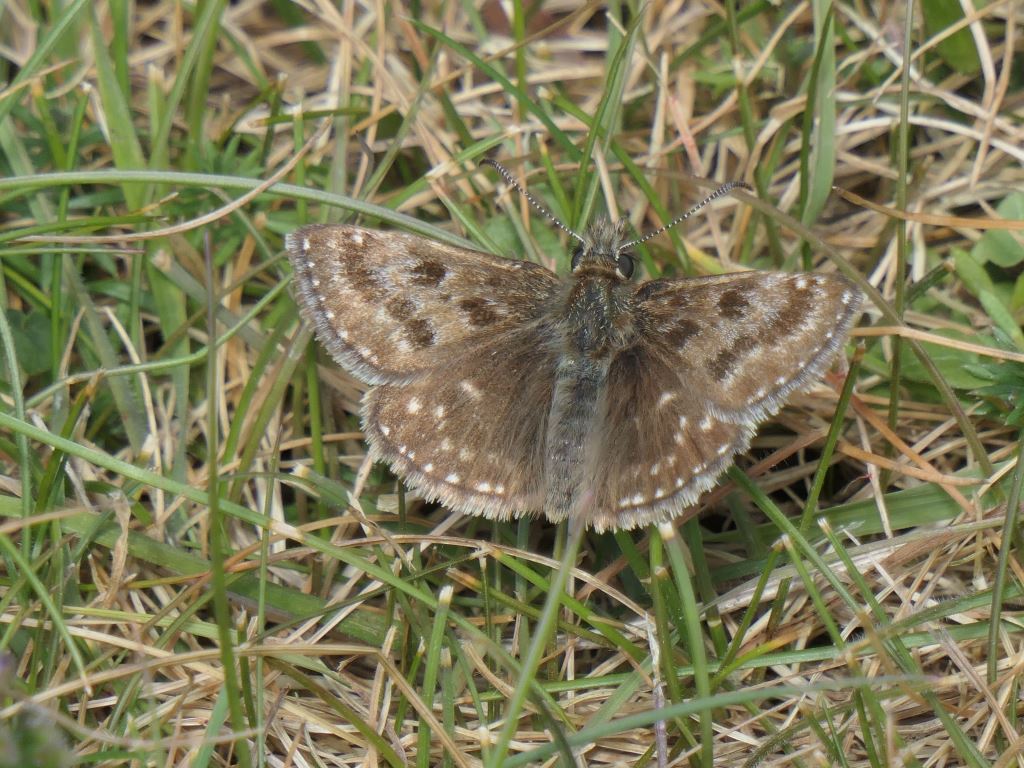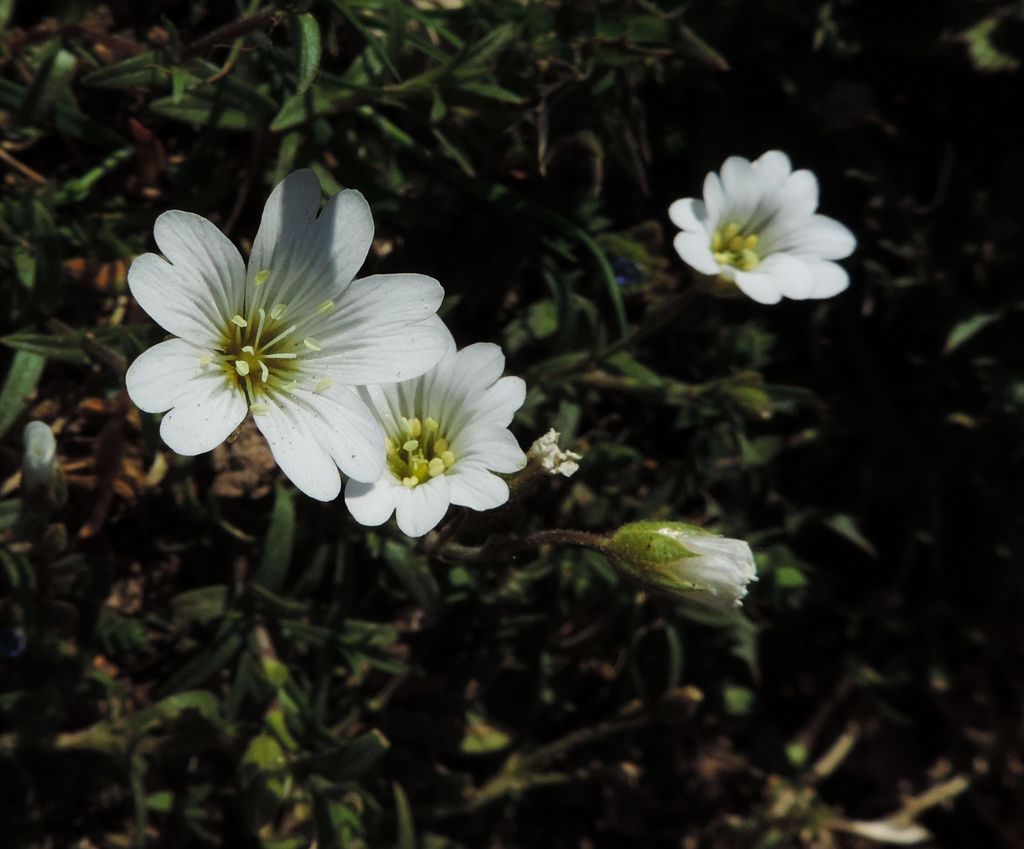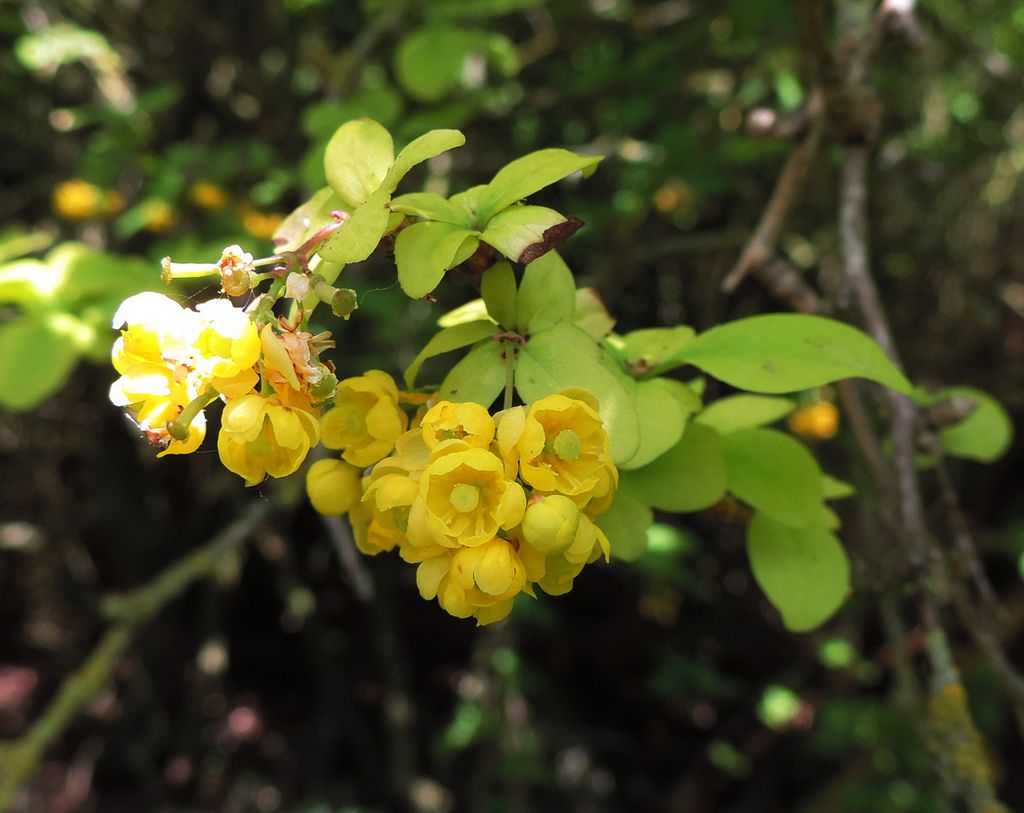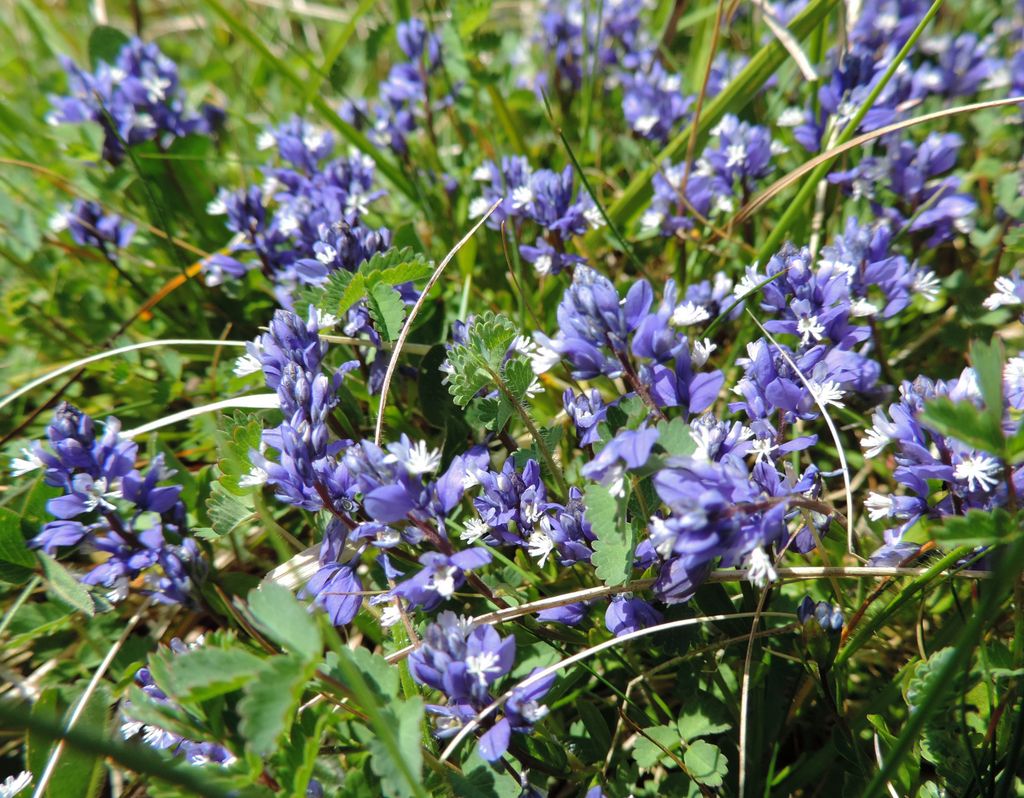Jan Haseler led a walk at Aston Upthorpe Downs on the morning of Saturday 14 May. It was a day of warm sunshine with a cloudless blue sky and a gentle southerly breeze. The plan for part of the walk was to inspect the work which the charity Plantlife had organised over the winter as part of its project to restore the threatened Juniper population of Southern England. According to Plantlife, as few as 28 colonies of Juniper with at least 50 bushes survive in the region and there has been no significant regeneration since the 1950s, when myxamatosis amongst the Rabbit population and the abandonment of wartime cultivation on thin Chalk soils led to a wave of new plants. Juniper is a pioneer species of bare Chalk. Back in 2010, Plantlife created a series of trial scrapes, removing vegetation and topsoil to reveal the underlying subsoil and Chalk bedrock. These were subsequently sown with locally collected Juniper seeds. 10 years on, 11 out of 14 of these sites had healthy Junipers, some of which were waist high and covered in berries. Plantlife have now embarked on a landscape scale project to restore Juniper, including large scale scrapes in Juniper Valley. The surface material has been removed from the site and spread over a neighbouring field.
The walkers set out southwards along the rutted track towards the Downs. Conditions were ideal for butterfly watching and good numbers of Dingy Skipper, Grizzled Skipper, Green Hairstreak, Small Heath, Brimstone, Orange-tip and Green-veined White were seen. Turning into Juniper Valley, first stop was the nearest scrape on the western side of the valley. Previously, the Junipers on this side of the valley had been submerged under a dense tangle of scrub. Now they had been cleared of scrub and stood as green islands in a sea of white Chalk rubble. There was no sign yet of any planting or new growth on the scrapes. The scraped area was mostly restricted to the upper part of the slope and stretched along most of the length of the valley. The eastern side of the valley has Junipers growing out of turf and had not been touched. Crossing the valley, the next stop was the fenced square of turf half way up the eastern slope where Pasqueflowers are protected from grazing Rabbits. One plant was still in flower and good numbers of wispy seed-heads could be seen on other plants. A few plants had managed to grow outside the exclosure and these had been protected by wire cages. The profusion of Cowslips, Chalk Milkwort and Salad Burnet inside the fence gave an indication of how flowery the valley might look with reduced Rabbit grazing. An obliging Green Hairstreak butterfly posed in full view just inside the fence. Descending to the valley bottom, Small Copper, Common Blue and Peacock were soon added to the butterfly tally and Cinnabar moths were seen. Continuing up the valley, flowering Field Mouse-ear was found on bare soil next to a collection of Rabbit holes and two Wheatears showed their white rumps as they flew away. Towards the top of the valley, a sprawling Barberry bush amongst the scrub on the western slope was covered with yellow flowers. Yet more Green Hairstreaks flitted round its upper branches.
A permissive path leads westwards from the top of Juniper Valley up to the track at the top of the ridge, where the group turned north-eastwards. Skylarks sang high above and a Lapwing was seen in flight. Kidney Vetch, Wild Mignonette and Musk Thistle were in flower beside the track. The next section of the walk followed Grim’s Ditch westwards towards Oven Bottom. A pair of Brimstones corkscrewed upwards in their mating flight, with the pale female above the yellow male. A pair of Yellowhammers flew out of the top of a Hawthorn bush and a distant Roe Deer was seen. Oven Bottom has fine Chalk grassland which is not grazed as heavily by Rabbits as Juniper Valley. In flower here were Cowslips, Chalk Milkwort, Horseshoe Vetch and Common Rock-rose. Once again, Dingy and Grizzled Skipper, Green Hairstreak and Small Heath were seen in good numbers, but an additional sighting here was a Marsh Fritillary of doubtful provenance (someone is thought to be releasing them unofficially). Common Heath and Green Carpet moths were confirmed, while a number of Burnet Moths with 5 spots generated some discussions as to their identity. The early date indicated that they might belong to the rare Chalk grassland subspecies of Five-spot Burnet Zygaena trifolii ssp. palustrella, rather than the much commoner Narrow-bordered Five-spot Burnet Zygaena lonicerae, which is not usually seen before mid-June. On the walk back, a Willow Warbler was heard, Comma and Red Admiral were added to the butterfly list and an observant botanist found Fairy Flax and the leaves of Dropwort.






Pictures by Rob Stallard and Tom Walker
